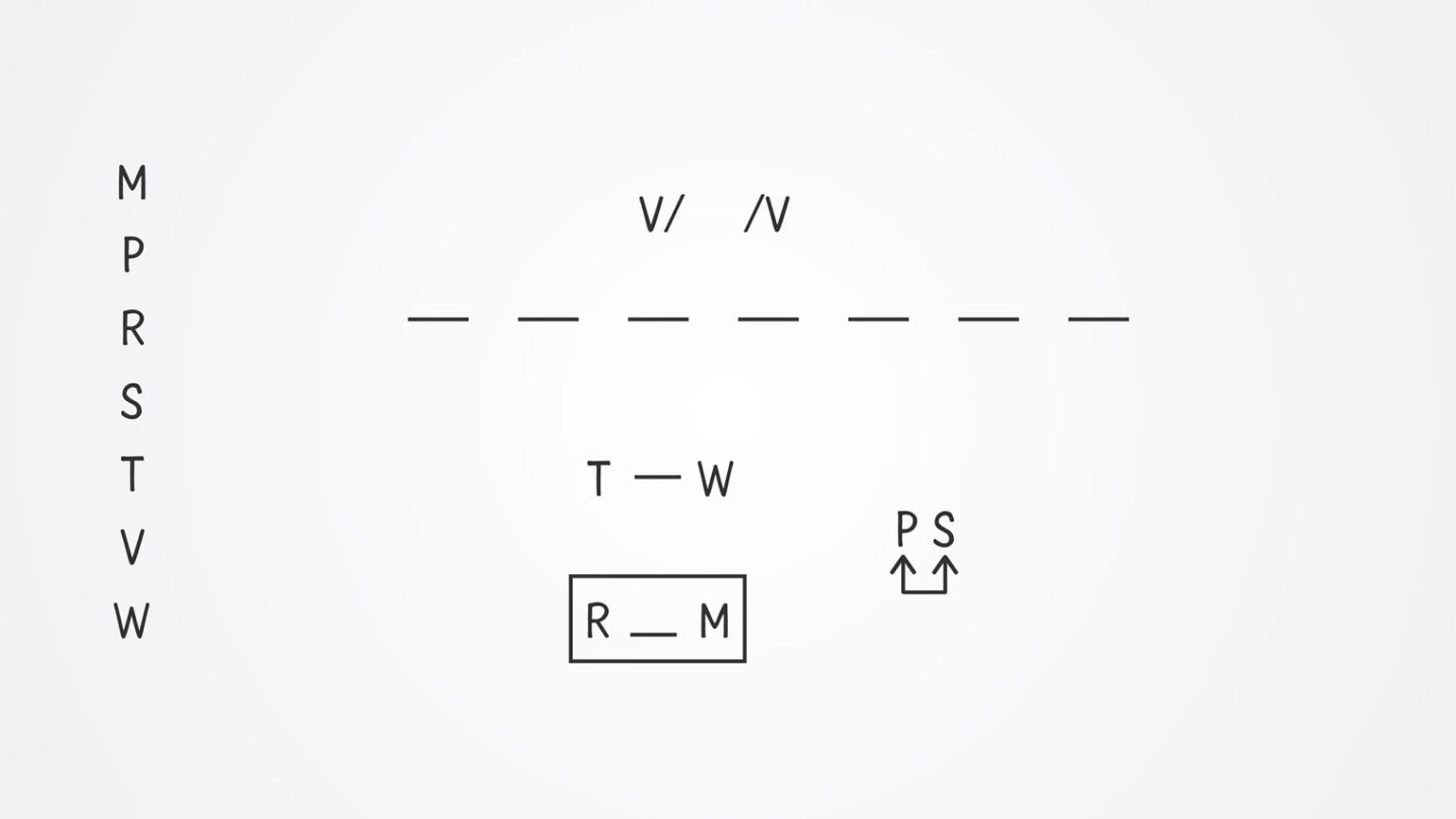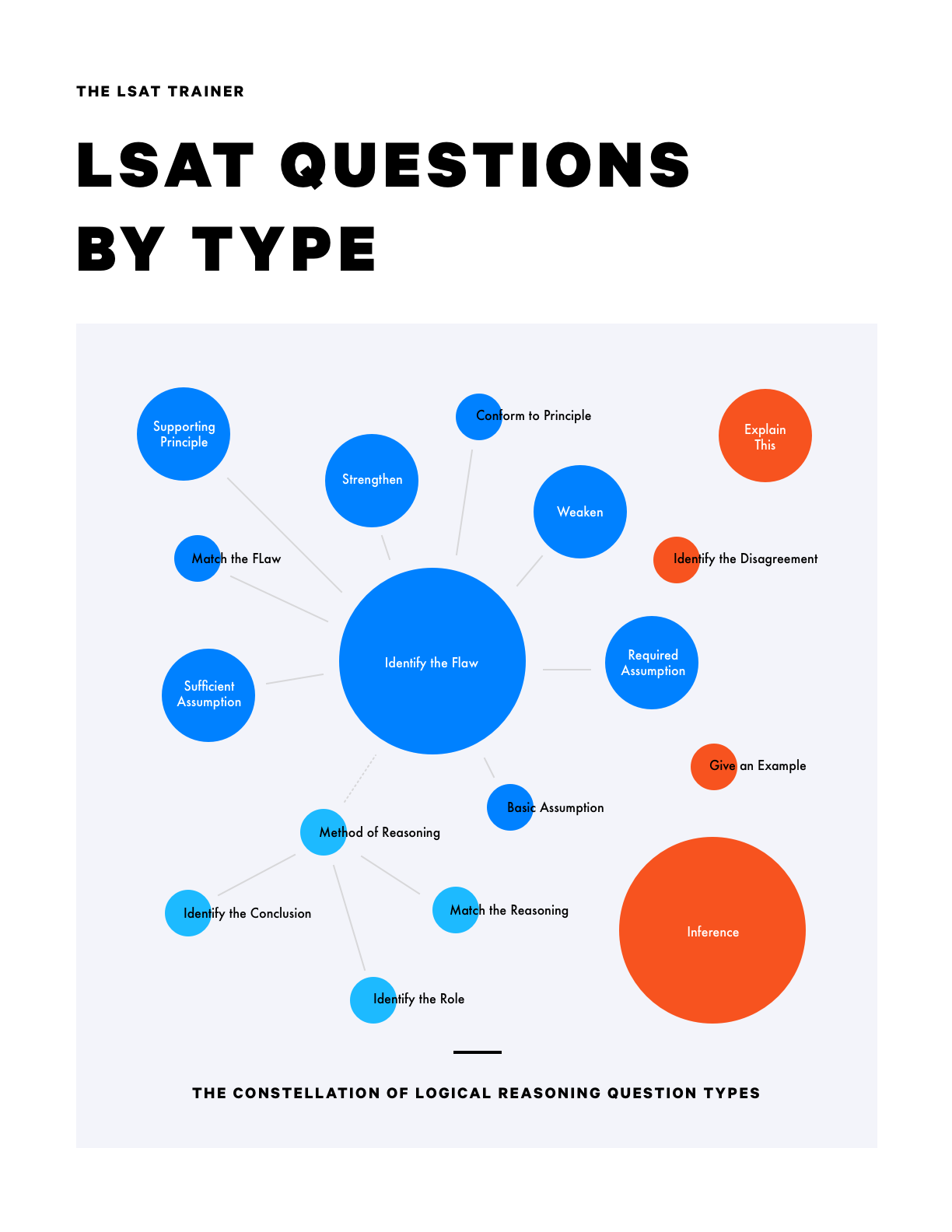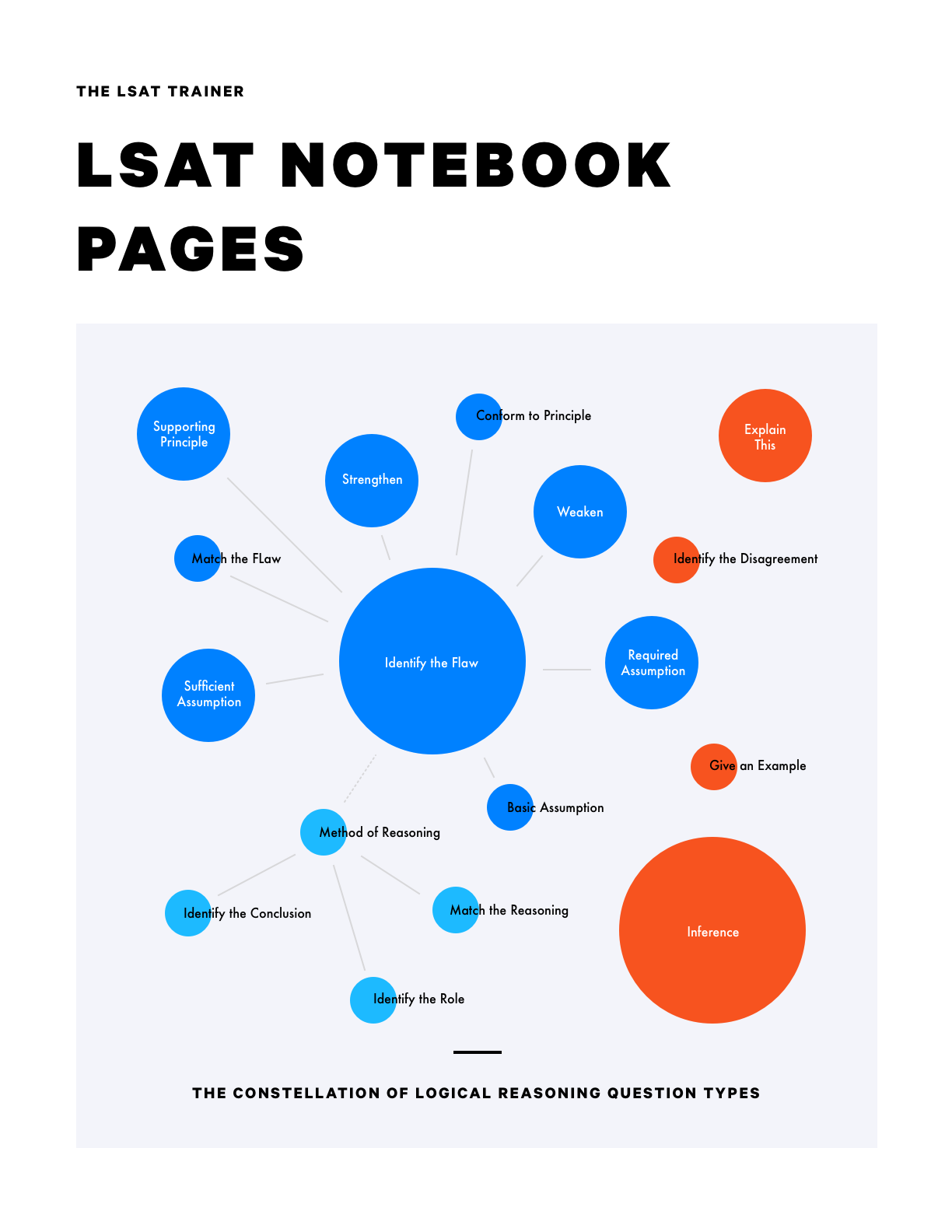Game 1
Step 1
Per the given scenario, we can write out the six elements to be placed - F, G, H, J, K, and L - and lay out the six positions to be filled, in order.
Step 2
Per the first rule, we can notate that F must be before both J and L.
Step 3
Per the second rule, we can notate that J must be after K and before H. We can connect this to our notation for the first rule.
Step 4
Per the third rule, we can notate that L must come before G. We can connect this to our notation for the first two rules.
Game 2
Step 1
Per the given scenario, we can write out the seven elements to be placed - F, G, H, I, K, L, and M - and lay out the four officers they can be assigned to - R, S, T, and U, with the understanding that each officer will evaluate one or more applications.
Step 2
Per the first rule, we can assign G to U.
Step 3
Per the second rule, we can notate that F and L must be together.
Step 4
Per the third rule, we can notate that H and I can’t go together, and M and I can’t go together.
Step 5
Per the fourth rule, we can notate that K must be alone.
Step 6
Per the fifth rule, we can notate that S must evaluate more applications than T.
Game 3 (Option 1)
Step 1
Per the given scenario, we can write out the six elements to be placed - F, K, N, O, R, and T - and the two subset characteristics - s or not s (s with cross out), and we can lay out the six positions to be filled, in order.
Step 2
Per the first rule, we can notate that we cannot have s’s in consecutive weeks.
Step 3
Per the second rule, we can notate conditionally that if N is not summarized, both R and T will be, as well as the contrapositive.
Step 4
Per the third rule, we can notate that N must go before T, and T must go before O.
Step 5
Per the fourth rule, we can notate that F goes before O, and O before both K and R. We can connect this to our notation for the third rule.
Step 6
Once the ordering rules are connected, we can infer that O must go in the fourth position, with F, N and T in some order before it (with N at some point before T), and K and R (in either order) after it.
Game 3 (Option 2)
Step 1
Per the given scenario, we can write out the six elements to be placed - F, K, N, O, R, and T, and lay out two separate diagrams, one that assigns the six elements to a position in an order, and another that indicates whether elements are summarized are not.
Step 2
Per the first rule, we can notate that we cannot have s’s in consecutive weeks.
Step 3
Per the second rule, we can notate conditionally that if N is not summarized, both R and T will be, as well as the contrapositive.
Step 4
Per the third rule, we can notate that N must go before T, and T must go before O.
Step 5
Per the fourth rule, we can notate that F goes before O, and O before both K and R. We can connect this to our notation for the third rule.
Step 6
Once the ordering rules are connected, we can infer that O must go in the fourth position, with F, N and T in some order before it (with N at some point before T), and K and R (in either order) after it.
Game 4

Step 1
Per the given scenario, write out the seven elements to be placed - M, P, R, S, T, V, and W - and lay out the seven positions to be filled, in order.
Step 2
Per the first rule, we can notate that T comes before W.
Step 3
Per the second rule, we can notate that there is exactly 1 element that goes after R and before M.
Step 4
Per the third rule, we can notate that P and S must be right next to one another.
Step 5
Per the fourth rule, we can notate that V is either third or fourth.



